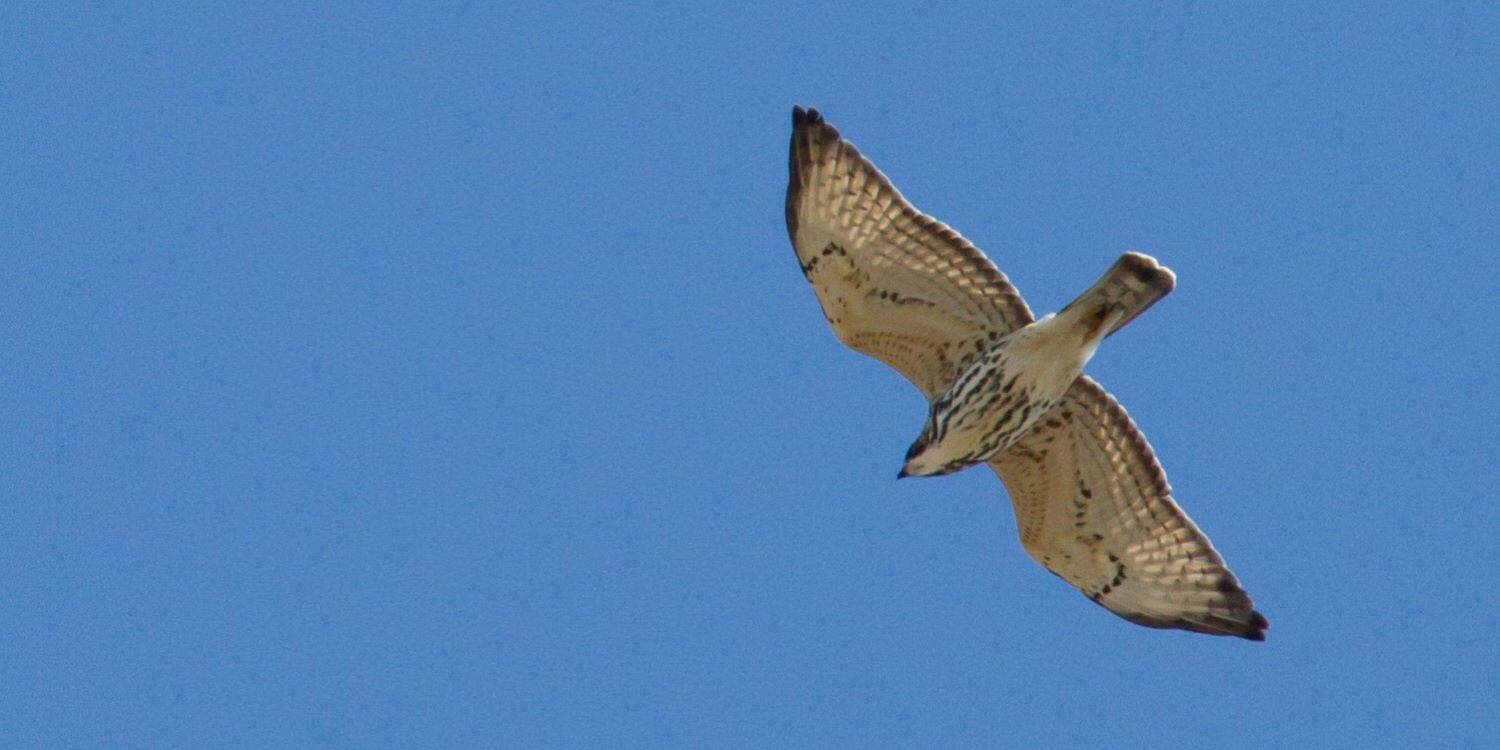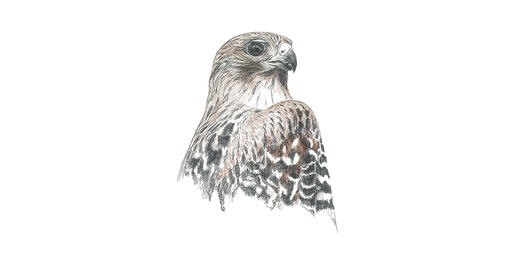

Fall migration of radio-tagged Broad-winged Hawks (Buteo platypterus) in California
The following story highlights a raptor research project that tells us something new about the incredible birds of prey we monitor at the Golden Gate Raptor Observatory (GGRO). Thank you to our GGRO volunteers for preparing this summary. Read more raptor science stories here >>
Authors: Phillip J. Capitolo, Lynn J. Jesus, Alan B. Harper, Allen M. Fish, and Angus C. Hull
Year: 2020
Journal: Wilson Journal of Ornithology
Broad-winged Hawks are known for amassing in large concentrations, often thousands of birds, along the eastern United States during fall migration. However, less is known about the migration of this small buteo (the genus it belongs to) along the Pacific Flyway. Small numbers of Broad-wings pass through the Bay Area every fall migration. GGRO records 115 sightings of Broad-wings on average each season, with the majority of Broad-wings flying through the Marin Headlands in late September.
In 1990, GGRO started a radio telemetry program to better understand how migratory raptors navigated the Pacific Flyway through the heavily urbanized San Francisco Bay Area. From 1994 through 2015, GGRO volunteers tracked five Broad-winged Hawks south during their fall migration. The objectives of this study were to determine the flight paths used by Broad-wings as far south as the US-Mexico border and to understand the diurnal timing of movements and roost locations used during their migration.
The GGRO volunteer-led teams attached radio transmitters to each hawk and began tracking the birds immediately after their release in the Marin Headlands. Up to four teams of two people coordinated with each other to follow each hawk’s southward movements. The teams used hand-held antennas from high points along the mountain ranges of coastal California to locate individual hawks and determine flight directions and roost locations.
Four of the five Broad-wings with radio transmitters reached the U.S.-Mexico border in 4-6 flight days, each taking similar routes along the Coast Ranges in central California, and the Transverse and Peninsular ranges of southern California. Average daily flight distance for the four hawks was 189 km. Migratory flights typically began in late morning and hawks began to search for roost locations a few hours before sunset.
This novel study of Broad-winged hawk migration along the Pacific Flyway is important in identifying raptor migration corridors and potential roost locations given the potential for future development of energy development along coastal California.
Golden Gate Raptor Observatory
How far does a Broad-winged Hawk fly? What's on a Merlin's migration menu? See what we're learning about birds of prey.
